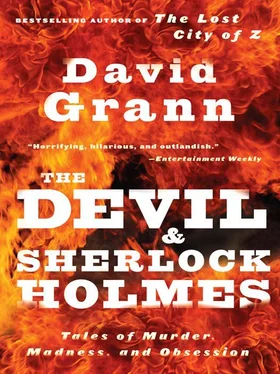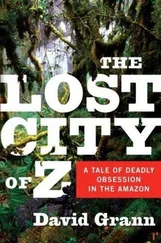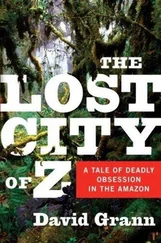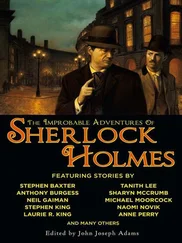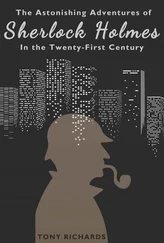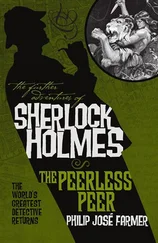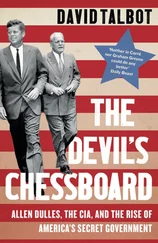He was not a good businessman. Whenever money came in, colleagues say, instead of investing it in his company he spent it. By 2000, he had filed for bankruptcy. His marriage also collapsed. “The basic problem was women,” his wife later said. “I knew that he was having an affair.” After Stasia separated from him, he seemed despondent and left Poland, travelling to the United States, and later to Asia, where he taught English and scuba diving.
He began to work intensively on “Amok,” which encapsulated all his philosophical obsessions. The story mirrors “Crime and Punishment,” in which Raskolnikov, convinced that he is a superior being who can deliver his own form of justice, murders a wretched pawnbroker. “Wouldn’t thousands of good deeds make up for one tiny little crime?” Raskolnikov asks. If Raskolnikov is a Frankenstein’s monster of modernity, then Chris, the protagonist of “Amok,” is a monster of postmodernity. In his view, not only is there no sacred being (“God, if you only existed, you’d see how sperm looks on blood”); there is also no truth (“Truth is being displaced by narrative”). One character admits that he doesn’t know which of his constructed personalities is real, and Chris says, “I’m a good liar, because I believe in the lies myself.”
Unbound by any sense of truth—moral, scientific, historical, biographical, legal—Chris embarks on a grisly rampage. After his wife catches him having sex with her best friend and leaves him (Chris says that he has, at least, “stripped her of her illusions”), he sleeps with one woman after another, the sex ranging from numbing to sadomasochistic. Inverting convention, he lusts after ugly women, insisting that they are “more real, more touchable, more alive.” He drinks too much. He spews vulgarities, determined, as one character puts it, to pulverize the language, to “screw it like no one else has ever screwed it.” He mocks traditional philosophers and blasphemes the Catholic Church. In one scene, he gets drunk with a friend and steals from a church a statue of St. Anthony—the Egyptian saint who lived secluded in the desert, battling the temptations of the Devil, and who fascinated Foucault. (Foucault, describing how St. Anthony had turned to the Bible to ward off the Devil, only to encounter a bloody description of Jews slaughtering their enemies, writes that “evil is not embodied in individuals” but “incorporated in words” and that even a book of salvation can open “the gates to Hell.”)
Finally, Chris, repudiating what is considered the ultimate moral truth, kills his girlfriend Mary. “I tightened the noose around her neck, holding her down with one hand,” he says. “With my other hand, I stabbed the knife below her left breast.… Everything was covered in blood.” He then ejaculates on her. In a perverse echo of Wittgenstein’s notion that some actions defy language, Chris says of the killing, “There was no noise, no words, no movement. Complete silence.”
In “Crime and Punishment,” Raskolnikov confesses his sins and is punished for them, while being redeemed by the love of a woman named Sonya, who helps to guide him back toward a pre-modern Christian order. But Chris never removes what he calls his “white gloves of silence,” and he is never punished. (“Murder leaves no stain,” he declares.) And his wife—who, not coincidentally, is also named Sonya—never returns to him.
The style and structure of “Amok,” which is derivative of many postmodern novels, reinforces the idea that truth is illusory—what is a novel, anyway, but a lie, a mytho-creation? Bala’s narrator often addresses the reader, reminding him that he is being seduced by a work of fiction. “I am starting my story,” Chris says. “I must avoid boring you.” In another typical flourish, Chris reveals that he is reading a book about the violent rebellion of a young author with a “guilty conscience”—in other words, the same story as “Amok.”
Throughout the book, Bala plays with words in order to emphasize their slipperiness. The title of one chapter, “Screwdriver,” refers simultaneously to the tool, the cocktail, and Chris’s sexual behavior. Even when Chris slaughters Mary, it feels like a language game. “I pulled the knife and rope from underneath the bed, as if I were about to begin a children’s fairy tale,” Chris says. “Then I started unwinding this fable of rope, and to make it more interesting I started to make a noose. It took me two million years.”
Bala finished the book toward the end of 2002. He had given Chris a biography similar to his own, blurring the boundary between author and narrator. He even posted sections of the book on a blog called Amok, and during discussions with readers he wrote comments under the name Chris, as if he were the character. After the book came out, in 2003, an interviewer asked him, “Some authors write only to release their … Mr. Hyde, the dark side of their psyche—do you agree?” Bala joked in response, “I know what you are driving at, but I won’t comment. It might turn out that Krystian Bala is the creation of Chris … not the other way around.”
Few bookstores in Poland carried “Amok,” in part because of the novel’s shocking content, and those which did placed it on the highest shelves, out of the reach of children. (The book has not been translated into English.) On the Internet, a couple of reviewers praised “Amok.” “We haven’t had this kind of book in Polish literature,” one wrote, adding that it was “paralyzingly realistic, totally vulgar, full of paranoid and delirious images.” Another called it a “masterpiece of illusion.” Yet most readers considered the book, as one major Polish newspaper put it, to be “without literary merit.” Even one of Bala’s friends dismissed it as “rubbish.” When Sierocka, the philosophy professor, opened it, she was stunned by its crude language, which was the antithesis of the straightforward, intelligent style of the papers that Bala had written at the university. “Frankly, I found the book hard to read,” she says. An ex-girlfriend of Bala’s later said, “I was shocked by the book, because he never used those words. He never acted obscenely or vulgar toward me. Our sex life was normal.”
Many of Bala’s friends believed that he wanted to do in his fiction what he never did in life: shatter every taboo. In the interview that Bala gave after “Amok” was published, he said, “I wrote the book not caring about any convention.… A simple reader will find interesting only a few violent scenes with a graphic description of people having sex. But if someone really looks, he will see that these scenes are intended to awaken the reader and … show how fucked up and impoverished and hypocritical this world is.”
By Bala’s own estimate, “Amok” sold only a couple of thousand copies. But he was confident that it would eventually find its place among the great works of literature. “I’m truly convinced that one day my book will be appreciated,” he said. “History teaches that some works of art have to wait ages before they are recognized.”
In at least one respect, the book succeeded. Chris was so authentically creepy that it was hard not to believe that he was the product of a genuinely disturbed mind, and that he and the author were indeed indistinguishable. On Bala’s Web site, readers described him and his work as “grotesque,” “sexist,” and “psychopathic.” During an Internet conversation, in June of 2003, a friend told Bala that his book did not give the reader a good impression of him. When Bala assured her that the book was fiction, she insisted that Chris’s musings had to be “your thoughts.” Bala became irritated. Only a fool, he said, would believe that.
Detective Wroblewski underlined various passages as he studied “Amok.” At first glance, few details of Mary’s murder resembled the killing of Janiszewski. Most conspicuously, the victim in the novel is a woman, and the killer’s longtime friend. Moreover, although Mary has a noose around her neck, she gets stabbed, with a Japanese knife, and Janiszewski wasn’t. One detail in the book, however, chilled Wroblewski: after the murder, Chris says, “I sell the Japanese knife on an Internet auction.” The similarity to the selling of Janiszewski’s cell phone on the Internet—a detail that the police had never released to the public—seemed too extraordinary to be a coincidence.
Читать дальше
